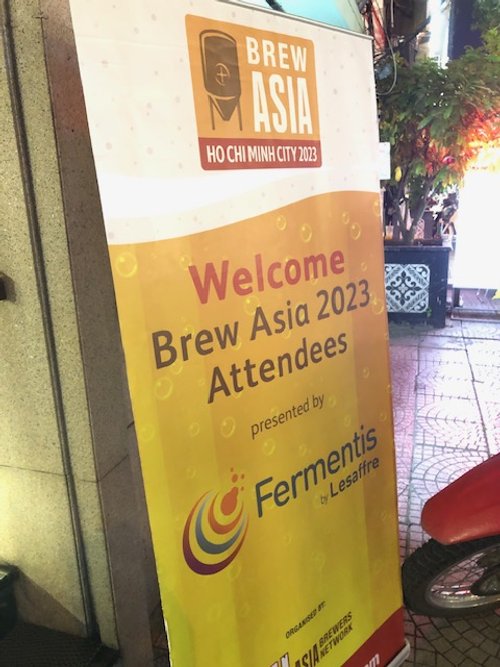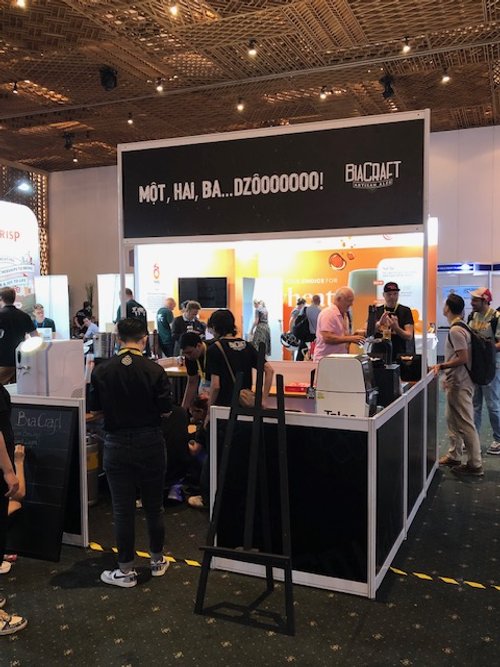CBA spoke to one of the pioneers of the Singapore Homebrewing scene, who was there right at the beginning in 2004, to find out more about the times, as well as to try to dig out some secrets behind his Lager which members had the good fortune to taste at the recent iBrew event.
1. We learnt from the recent iBrew event that one had to obtain a $100 license back in the early 2000's just to homebrew, among other challenges. Could you share your experience then?
Yes indeed. This was an exploratory time for the IRAS after they decided in 2004 to legalise homebrewing and they did impose a $100 license fee. I remember having to go to the IRAS physically where I was escorted to an open plan office where an officer took down my details, collected the money and handed me a receipt. Completely different to what I had expected having been to other Government departments here such as the Immigration authority where the process is structured and organised. It was clear to me then that they had not set up to process homebrew licencing, at least not yet. I recall chatting to the officer saying that they had gone to the trouble of purchasing a kit to test out the process. They followed the instructions, but they were not impressed with the product, saying that the basic taste was there but was nothing like what he was used to, ie Tiger or Carlsberg.
Well, it turned out I only had to pay this licence fee once, because soon afterward they decided that the uptake was not sufficient for them to justify the administration investment in the development of procedures, systems to record them let alone the manpower and instead decided to abolish the need for a license but impose the restrictions that all homebrewers know about today.
2. We heard from Max Collins, from the perspective of a beer drinker, that in those days the objective was to find better quality beers than what was locally available. How do you view the progress of the craft beer scene from then until now?
When I arrived here in Singapore in 1999, I had the fortune of working in an office that happened to be a short walk to Riverside Point opposite Clark Quay, where of course Brewerkz was and still is today, well known as the pioneer brewpub in Singapore. I vividly recall enjoying what we called their “Rendang” special, for $19.99 you enjoyed 3 pints of beer plus a set curry lunch which was brilliant value at the time. I don’t recall any other brewpub opening their doors till well after homebrewing was legalised in 2004. The Pumproom followed suit in 2006 in Clark Quay and then Red Dot at Dempsey around the same time if not before. Others followed, but it was clear that the craft beer revolution had begun. The evolution of craft beers meant not only the proliferation of many new local microbreweries, but also distributors of craft beers from all around the world were showing their wares in hundreds of outlets whether it be draft, bottles or in the much improved and artfully decorated cans.
3. How did you get into brewing and what about the journey to perfecting your Lager? (Homebrewers are generally aware that Lager brewing is unforgiving in a homebrew environment, where a small mistake could lead to a disaster!)
I’d always loved beer from the moment my dad allowed me to try it for the first time. My first experience came at the final year of university where we brewed a beer (extract based) as part of the Chemical Engineering degree I was studying. Of course, there was no internet then so one had to rely on books and magazines to learn how, but I tracked down a brewing supply shop close by and got going with my own DME based beers, because the kits available at the time were simply woeful. I took a hiatus from brewing as my career and starting a family took me overseas, but was one day walking past a demonstration at the then Carrefour supermarket in Suntec where a product called The Beer Machine was being marketed. I resisted the urge to buy the whole setup there and then, but a little bit of research showed that there were two businesses (Ibrew and Homebrew coop) that had already established their own homebrew supply shops. I bought a Morgans kit first, then Coopers. I was never satisfied with the inconsistent quality of kits and became increasingly weary of the origin and later handling of the mystery gloop on the tin can, so graduated to creating my own extract brews using DME and then finally to all grain brewing. The rest is history.
Insofar as the lager style is concerned, it is what I grew up on and has been the style that stuck with me. Unfortunately, I learned that despite it having a clean and simple flavour, it proved to be the most difficult style to brew at home. The reason is that the slightest off flavour can be detected and not hidden behind strong malt or hops flavours. Furthermore, lagers require patience, unlike an ale which if brewed properly can be drinking well after a week or so from completion of fermentation. That requires an investment in refrigerated storage to effect the lagering process. I admit that I did set the bar high, though I would have to say it took me 10 years to get it to a level I was happy with. Today I am still learning, experimenting and tweaking with every brew.
Lager is not the only style I brew. I like to sample as many craft beers as I can, and very occasionally one strikes a unique chord with me. If that happens, I will try to reverse engineer the beer and brew something that comes close. It usually takes many, many brews to appreciate what malt, hops, yeast or water profile contributes to the specific flavours and character I target. It can take me 7 or 8 iterations before I tire of trying. Sometimes I get there, sometimes not, but always a journey of learning.
*Just in case you were wondering what was brewing in the picture above……































